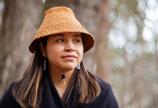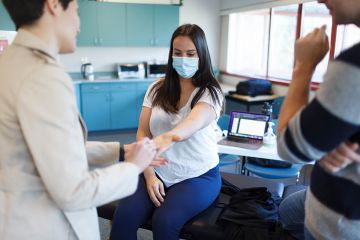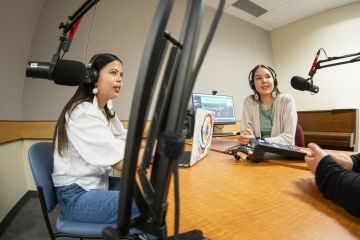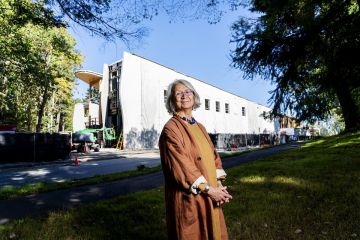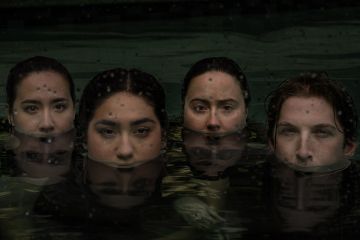Cultural re-centring model
- Kate Hildebrandt
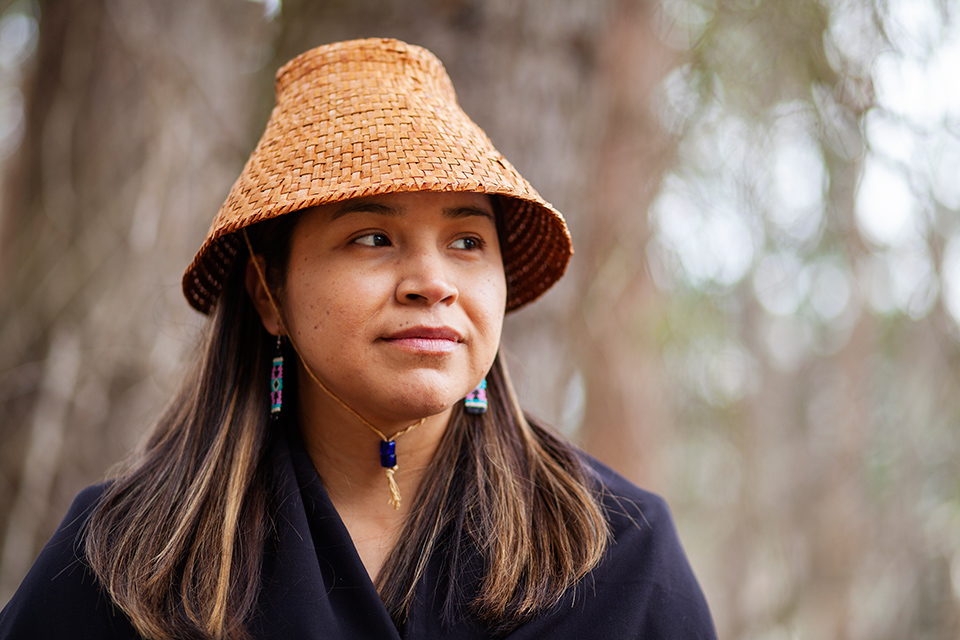
Ancient ways of knowing help heal, bring dignity to Indigenous youth
How does one “speak back” to violence experienced by Indigenous girls, young women, two-spirit youth, even whole communities impacted from centuries of oppression?
This question frames the work of Sisters Rising, an Indigenous-led, community-based research project in its third year of embracing one overarching intention: to honour Indigenous youth who have experienced sexualized, gender-based violence by offering traditional land- and arts-based teachings.
“We ask participants, ‘What do you need to lift yourself up?’ They tell us they want to connect to their culture. They want to feel appreciated and respected. They want basic supports for health and community involvement, but they want that support from people who have lived their same story,” says Sam.
A key finding, says Sam, is that all participants state their claim for connectivity. “They want to feel happiness, to find their families, to learn their first language. This involves ‘re-centring,’ which is the focus of my thesis.”
Sam is completing her master’s thesis with Sandrina de Finney, a child and youth care researcher and the principal investigator for Sisters Rising. Sam’s learning has shaped her identity as a “knowledge seeker,” committed to helping Indigenous young people find their way back after experiencing sexualized trauma. To date, Sisters Rising has conducted workshops involving around 350 young people. The team also works with community leaders to help them deal with youth suicide, violence and self-harm.
Sam recently applied for her own research grant to continue leading workshops with Indigenous girls and local Elders within her community.
“These girls are afraid, withdrawn, ashamed and exhausted. Their testimonials often speak to feelings of a deep ugliness where their sadness turns into anger.” Sam strives to counter their oppression with a narrative of resiliency. “We must acknowledge our strengths; we are still here being who we are.”
Such connections can be life-altering, she explains. When an Elder tells a girl about her people’s history with cedar—used for housing, clothing, canoes and carvings—then shows her how to make a cedar rose as her ancestors did, the spark of identity is lit as teachings are handed down. As with wool, land-based materials carry forward ancient stories of Coast Salish women crafting ceremonial headbands or knitting sweaters as part of their cultural traditions.
“While sharing stories is valuable,” says Sam, “some cannot articulate what they’ve been through.” Using land-based materials encourages the participant to express herself using art as her people have done. “When a girl realizes she is part of an ancient way of knowing,” Sam explains, “our findings show this connection can heal and regenerate a young life.”
Sisters Rising is part of the Networks for Change and Well-being study funded by the Social Sciences and Humanities Research Council of Canada with the International Partnerships for Sustainable Societies initiative
Edgewise : learn more
In 2009, Statistics Canada reported that Aboriginal women were almost three times more likely than non-Aboriginal women to report having been a victim of a violent crime. This was true regardless
Indigenous females most at risk are between 13 and 26 years of age. They experience Canada’s highest rates of sexual and racialized violence, sex trafficking, incarceration, murder, poverty, under-housing, homelessness and under-servicing in health and education.
“Being Indigenous and female is a risk,” reported Dubravka Simonovic, Special Rapporteur on violence against women for the United Nations Human Rights Council, mandated to promote and protect human rights worldwide. During her visit to Canada in April 2018, Simonovic spoke about Canada’s need to address root causes leading to the disproportionate level of violence facing Indigenous females. While she commended our federal government’s efforts to create a national inquiry into murdered and missing Indigenous women, Simonovic said other measures should be taken simultaneously.
Simonovic stated Canada must act now and that “deep-rooted discrimination stems from the long-standing intergenerational trauma resulting from colonialism, and discriminatory legal provision and practices.” Simonovic’s final report is expected to be released in 2019.
Photos
In this story
Keywords: Indigenous, youth, graduate research, community, art, health, teaching, gender, sexualized violence, child and youth care
People: Shezell-Rae Sam, Sandrina de Finney
Publication: knowlEDGE

